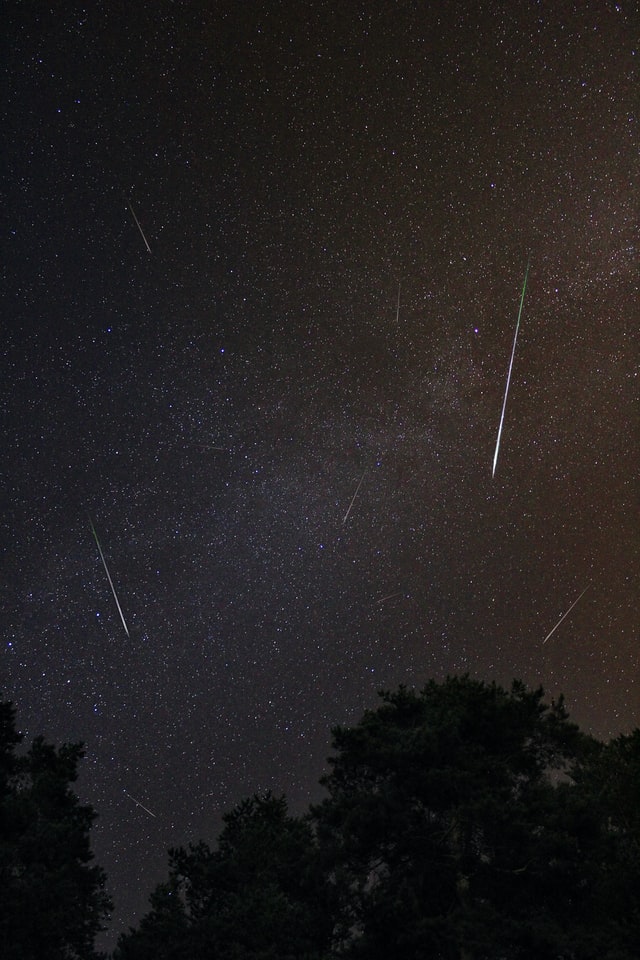
This week is the best time to watch for this year’s Perseid meteor showers.
From July 17 to August 24, the Earth is passing through the vast dusty path left from Comet Swift-Tuttle. But the peak of comet viewing will be this week, with the best views of comets likely in the early hours of Wednesday morning, August 12.
If you choose a dark viewing area any night this week–and if you are patient–you should be able to see some meteors. At its peak, the Perseid meteor shower could produce 100 meteors per hour.
Meteors are the pieces of debris that enter the Earth’s atmosphere. They pass through the atmosphere at high speed–37 miles per second!–burning up as they fall. They make bright streaks in the night sky. Most of the Perseid meteors are only the size of a grain of sand.
When a meteor is large enough to make it all the way to the ground without burning up, we call it a meteorite. When meteors are still in space, the pieces of debris are called meteoroids.
Comet Swift-Tuttle, a large comet, is the largest object to regularly pass close to the Earth. Its nucleus is 16 miles wide. That is twice as big as the object that some scientists think struck Earth and wiped out the dinosaurs.
Comet Swift-Tuttle orbits the sun, taking 133 years to complete one round-trip journey. The last time it was closest to the sun was 1992 and it won’t get that close to the sun again until 2125.
In the year 3044, scientists predict the comet will make one of its closest passes by Earth, when it will be close to 1 million miles away.


